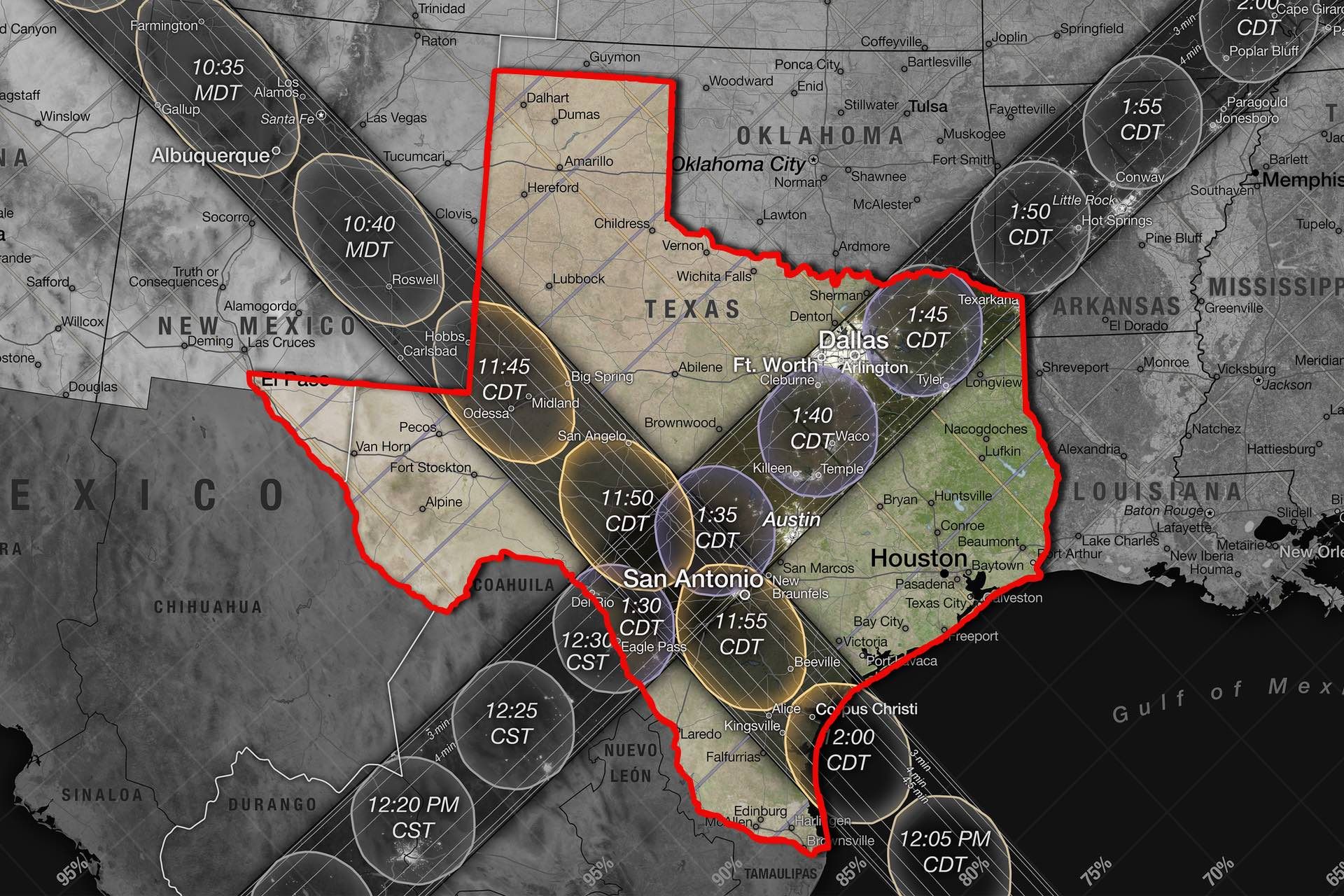Texas Cities Prepare for 'Ring of Fire' Solar Eclipse Tourism in October
Communities across Texas have discovered they will fall underneath the path of a remarkable astrological occurrence, not once but twice in the coming months, and officials are gearing up for the thousands of visitors expected to visit for the occasion.
On October 14, the first of two solar eclipses is set to take place. The moon will cross in front of the sun during daytime, and for several minutes those in the path of the shadow cast upon the Earth will experience the day turn from light to darkness.
According to the National Aeronautical Space Administration (NASA) there are four different types of eclipses.
Instances where the moon totally blocks the sun causing complete darkness in its shadow are known as “total eclipses.” Texas will experience a total solar eclipse during the second event on April 8, 2024.
October’s occurrence is known as an annular eclipse, when the moon passes between the sun and Earth at its furthest point from Earth, preventing it from fully blocking the sun and causing a ring of fire to appear around the edges.
The other two types are a partial eclipse, where the sun is only partly blocked, and a “hybrid” where parts of the Earth will experience a total eclipse and in other places a partial eclipse.
During both of the approaching solar events, the eclipse shadow will cross Texas and those closest to the center of the path will experience the strongest effects of the event.
Cities across the state that have discovered their communities are in this prime viewing band are gearing up, launching websites to help eclipse viewers find lodging, events, shopping experiences, and more.
Kerrvile is one of these towns, having launched its own webpage dedicated to the eclipses. The town is predicting strong turn out, with hotels and RV parks already booking up.
“This will be a historic event for our community, and the economic impact will be extraordinary,” City of Kerrville Tourism and Event Coordinator Rain Thoresen said in a press statement regarding the events. “Expecting such a large number of visitors can be a little overwhelming, but we are working to ensure our community is ready and excited! Being in the line of totality for a solar eclipse is a once-in-a-lifetime opportunity for our area.”
Kerrville formed an event committee to prepare for the occasion, which even includes a former NASA employee, Jeff Stone, who weighed in on the “life-changing event.”
“Suddenly, in the middle of the day, a shadow races toward you at 1,500 miles an hour, and the day is gone,” Stone said, adding, “Planets, stars, and the corona are visible as the temperature drops and everyone around is awestruck. You’ll never forget it!”
An annual River Festival event is also being held there in conjunction with the eclipse.
In the nearby town of Burnet, an eclipse festival is being held on a local ranch boasting a lineup of live music, art shows, and technology panels.
Even the State of Texas has launched an official webpage providing information regarding the paths of the eclipse and highlighting events around the state.
While local, state, and national level officials are encouraging everyone to experience the rare event, they are also stressing the importance of being prepared.
NASA viewing guidelines state, “Because the Sun is never completely covered observers must wear proper eye protection at all times while watching an annular eclipse,” and warns that regular sunglasses are not acceptable for viewing the eclipse. Rather, viewers must obtain special viewing glasses or use other methods recommended by NASA.
In addition, local officials urge viewers to be mindful of the heat and avoid sunburn in preparing for outdoor conditions.
The City of San Antonio sits roughly in the center of the eclipse’s path across the state of Texas in October, and according to NASA the event will begin to occur there at 10:23 a.m. Central Standard Time.
Source: The Texan


